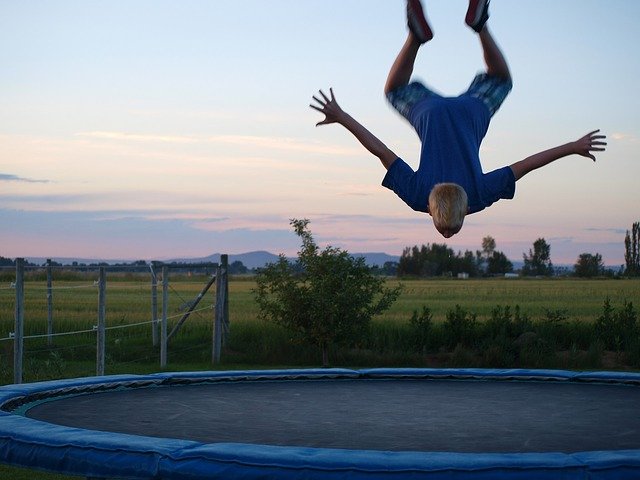Trampolines Pose a Risk for Spinal Injury
Did you know that the use of trampolines poses a risk for spinal injury? Most people are aware that trampolines can be dangerous, that’s why owning one can cause your insurance premium to rise. But when we think of trampoline injuries we tend to think of broken bones like wrists and ankles. But trampolines also pose a risk for a more severe spinal injury.

Trampoline Injuries
The Consumer Product Safety Commission has reported on trampoline use several times over the past few decades, as the number of trampoline parks and home-owned trampolines rise. In the 1990’s, as trampolines became more popular, emergency room visits associated with trampolines tripled.
Location of Injuries
Trampoline related injuries to the legs/feet are most common, followed by injuries to the arms/hands, head/neck, and shoulders/trunk. Injuries to the head and neck accounted for about 20% of the total trampoline related emergency room visits recorded.
Causes of Trampoline Injuries
Common causes of trampoline injuries include:
- colliding with other jumpers
- falling off the trampoline
- falling onto trampoline parts (ie: springs)
- doing tricks or stunts
Trampolines and Spinal Injuries
Trampoline-related spinal injuries are often caused by the jumper landing on their head and neck. This is often the result of the jumper attempting a somersault or flip.
Because one of the purposes of the spine is to protect the spinal cord, an injury to the spine can result in damage to the important nerves in the spinal column. A review of US injury records showed permanent neurological damage in one out of every 200 trampoline related emergency room visits. This damage can lead to paralysis and even death.
Safety Tips for Trampoline Use
The Consumer Product Safety Commission (CPSC) made several recommendations focused on improving trampoline safety. As a result, most home trampolines are now equipped with safety nets and padding.
In addition, they recommend the following:
- children under the age of 6 should not be allowed to use a full-sized trampoline
- children should be supervised while using a trampoline
- only one person should use the trampoline at a time
- trampoline and enclosure should be inspected regularly
- trampoline should be kept away from trees and structures
- trampoline should not be used during high winds
- flips and somersaults should be discouraged
Trampolines can be fun and great for exercise. But, if you’re going to put one in your backyard or go to a trampoline park, keep these safety tips in mind.
See other stories that relate to children and the spine.
References
- https://www.reuters.com/article/us-insurance-homeowners-trampoline/trampoline-for-the-kids-check-your-insurance-first-idUSBRE8BJ0ZE20121220
- https://www.cpsc.gov/s3fs-public/pdfs/tramp00.pdf
- https://www.cpsc.gov/Safety-Education/Safety-Guides/toys-hobbies/trampoline-safety-tips-poster
- https://www.aappublications.org/news/2019/09/10/focus091019
